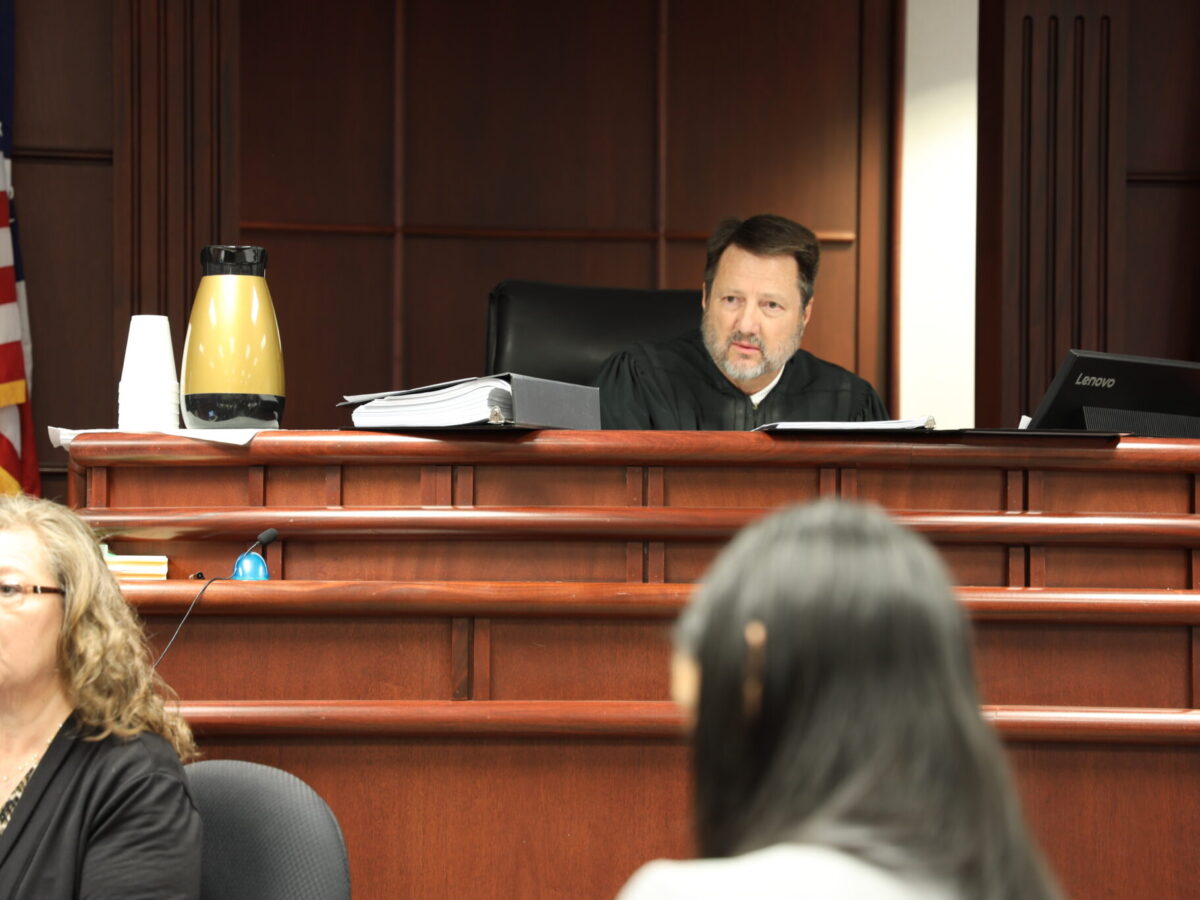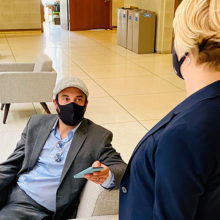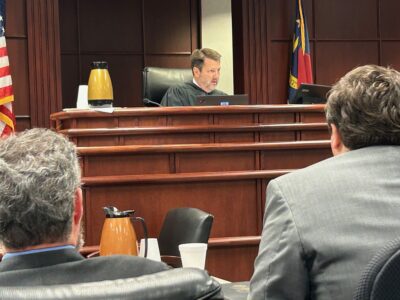
|
|
Judge James Ammons held his second hearing in the long-running Leandro case Friday, hearing from parties in the case about how much money they think remains to be funded by the state in the comprehensive plan following the passage of a state budget in 2022.
“It appears that the issue before this court … is to recalculate the amount,” Ammons said before going into a series of questions seeking to understand the differences between amounts proposed by parties in the case.
Go here for a history of the Leandro case and to learn how we got here.
Most of the parties in the case believe that about $677 million remains to be funded for years two and three in the comprehensive remedial plan (CRP).
Legislative leaders, who have intervened in the case, disagree. Their attorney Matthew Tilley argued Friday that the amount remaining is $377 million.
Tilley had two main arguments. He pointed out several areas in which he thought the number provided by the other parties in the case didn’t take into account funding appropriated by legislators. He also argued that any recurring funding in year two of the plan should be disregarded because that year already passed.
He said in his court filing that the calculations from the other parties in the case — which came from the Office of State Budget and Management (OSBM) — “treat every amount listed in the CRP as a cumulative obligation, even if it consists of a recurring appropriation. This creates obvious problems. There is no need for the State to pay recurring appropriations for salaries and other ongoing expenses from Year 2, since money for those same items has been included again in Year 3. OSBM, however, would require the State to pay all money included in Years 2 and 3, even though Year 2 has come and gone. In most cases, this would result in the State paying double the amount Plaintiffs claim is necessary to fund the programs listed in the CRP.”
Tilley called to the stand Brian Matteson, director of the General Assembly’s fiscal research division, to take Ammons through the differences in calculations.
Matteson’s testimony related to certain line items on which the legislators’ attorney and the rest of the parties disagree.
“OSBM’s calculations leave out various appropriations made to the agencies in question. This includes money for new teacher support programs ($2 million); an educator compensation study ($109,000); disadvantaged student funding allotments ($26.1 million); principal and assistant principal salaries ($6.2 million); district support programs ($14 million); the review and adoption of core curricular resources ($260,000); and the establishment of additional cooperative and innovative high schools ($730,000),” Tilley’s filling states.
See the filing from the attorney for legislative leaders that discusses this topic further.
Following that, the attorney for the state called to the stand Anca Grozav, the state’s chief deputy budget director, to discuss the position of the other parties on these line items.
See her filing along with exhibits that lays out how the parties arrived at the $677 million number.
The line items that the parties spent the bulk of the hearing arguing about would only bring the total funding required down to $633 million, if the judge accepted Tilley’s arguments that they apply to the CRP. The difference between that and the $377 million comes from Tilley’s argument that the legislature is no longer responsible for year two of the plan.
Scott Bayzle, attorney for the plaintiffs in the case, said in his closing arguments that not including recurring funds for year two in the calculations is a mistake. He explained that the CRP builds on itself and underfunding year two impacts funding in all other years.
He said that to accept Tilley’s argument would amount to killing the CRP.
“If we were to accept that argument, the state would never have to implement the CRP because it could just delay every year,” he said.
Ammons said at the end of Friday’s hearing that the parties in the case have the power to decide this issue by agreement, though he doesn’t expect them to. He asked for additional filings from the parties in the case by next week and expects to have his determination on the calculations done a few weeks after that.
“I promise I won’t be here in 29 years,” he said.
Background
The Leandro case began nearly 30 years ago when families from five low-wealth counties sued the state, saying it was not meeting its obligation to educate all students equally. The state Supreme Court has previously said in the case that North Carolina’s children have a right to the “opportunity to receive a sound basic education” and that the state had not lived up to that constitutional requirement.
In 2021, a previous judge in the case, David Lee, ordered the state to turn over $1.7 billion to fund two years of a comprehensive plan the court decided was the best way to ensure the opportunity for a sound, basic education for all students.
That number was later adjusted after the passage of the the 2021 budget to account for items funded by the biennium budget. The new number was $785 million.
Lee’s order ultimately made its way up to the state Supreme Court, which ruled in November that the money needed to be transferred. They sent the case back down to the trial court to determine how much money still remained to be paid out in years two and three of the CRP following the release of a budget by the General Assembly in 2022.
However, the Supreme Court was majority Democrat last year. Party control flipped after the November elections.
In the new year, General Assembly leaders and the state controller asked the Supreme Court to put back in a stay on the money transfer while justices of the top court considered further arguments. The new Republican-led Supreme Court ruled just last week that the transfer order should halt while it considered the position of the state controller.
Under Lee’s order, the state controller is integral in the role of transferring the money for the CRP. Both the state controller at the time of Lee’s order as well as the current state controller argue that the state controller can only transfer money when the General Assembly appropriates funds, and that to do otherwise would open the state controller and the controller’s staff to criminal and civil liability.
Currently, Ammons is only considering how much money remains to be funded in years two and three of the CRP. See what happened at his first hearing here.
See the most recent filing from the attorney for legislative leaders.
Go here for the most recent filing for the state.
Go here for the affidavit from the chief deputy director of the state budget
Go here for the most recent filing for plaintiffs.
Go here for the most recent filing from Charlotte-Mecklenburg Schools





